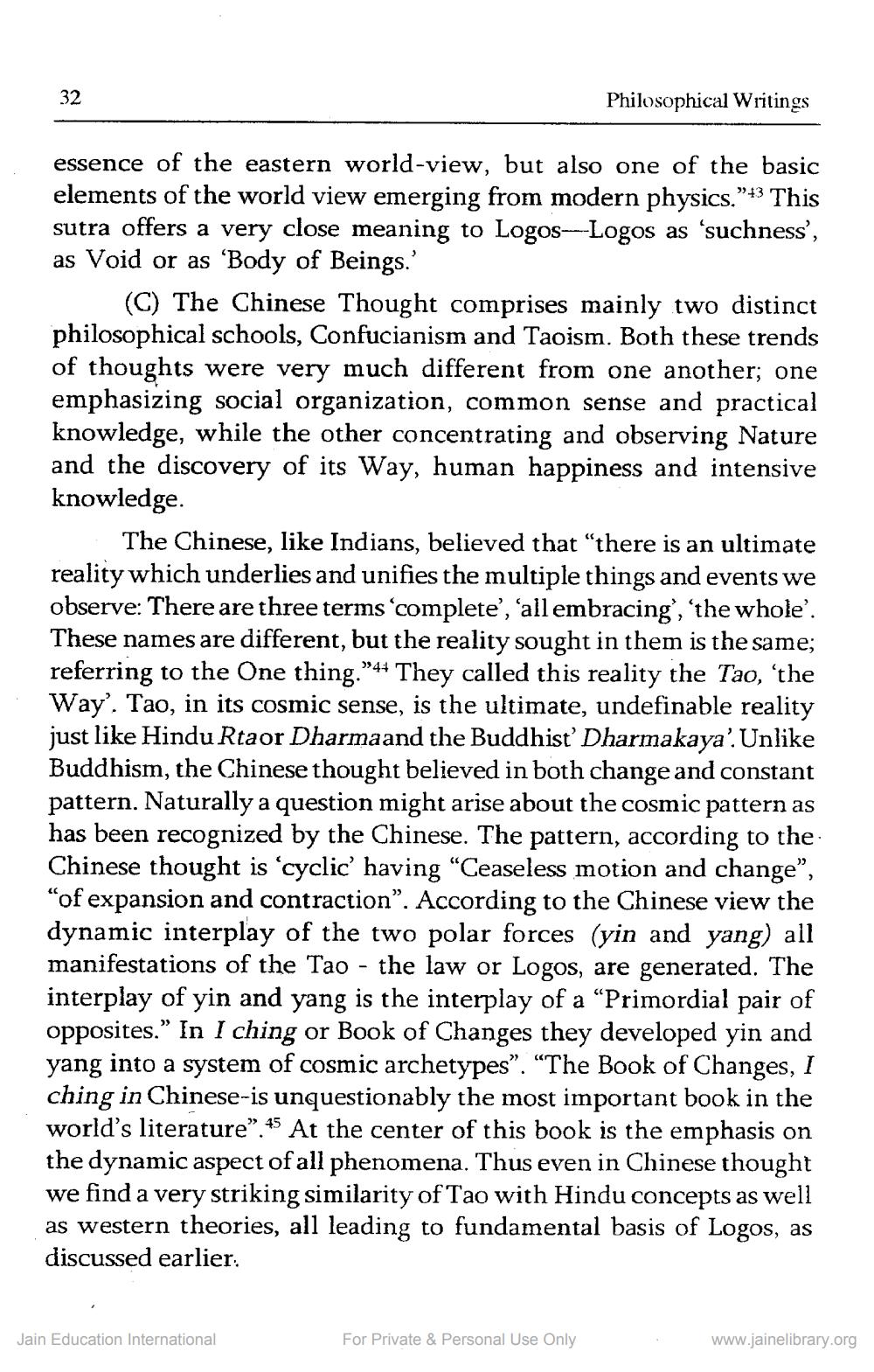________________
32
Philosophical Writings
essence of the eastern world-view, but also one of the basic elements of the world view emerging from modern physics."43 This sutra offers a very close meaning to Logos---Logos as 'suchness', as Void or as 'Body of Beings.
(C) The Chinese Thought comprises mainly two distinct philosophical schools, Confucianism and Taoism. Both these trends of thoughts were very much different from one another; one emphasizing social organization, common sense and practical knowledge, while the other concentrating and observing Nature and the discovery of its Way, human happiness and intensive knowledge.
The Chinese, like Indians, believed that “there is an ultimate reality which underlies and unifies the multiple things and events we observe: There are three terms ‘complete', 'all embracing , 'the whole'. These names are different, but the reality sought in them is the same; referring to the One thing."4+ They called this reality the Tao, 'the Way'. Tao, in its cosmic sense, is the ultimate, undefinable reality just like Hindu Rtaor Dharmaand the Buddhist' Dharmakaya'. Unlike Buddhism, the Chinese thought believed in both change and constant pattern. Naturally a question might arise about the cosmic pattern as has been recognized by the Chinese. The pattern, according to the Chinese thought is ‘cyclic' having “Ceaseless motion and change”, "of expansion and contraction”. According to the Chinese view the dynamic interplay of the two polar forces (yin and yang) all manifestations of the Tao - the law or Logos, are generated. The interplay of yin and yang is the interplay of a “Primordial pair of opposites.” In I ching or Book of Changes they developed yin and yang into a system of cosmic archetypes”. “The Book of Changes, I ching in Chinese-is unquestionably the most important book in the world's literature”. 45 At the center of this book is the emphasis on the dynamic aspect of all phenomena. Thus even in Chinese thought we find a very striking similarity of Tao with Hindu concepts as well as western theories, all leading to fundamental basis of Logos, as discussed earlier
Jain Education International
For Private & Personal Use Only
www.jainelibrary.org




